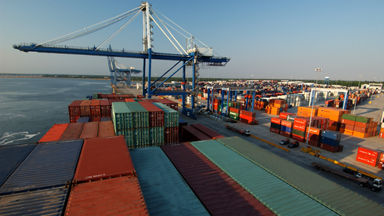Insights to Help Your Business
Supply Chain Risk
Leverage these tips to mitigate your risk.

What’s the story: Reduce the impact supply-chain issues can have on your bottom-line with these helpful tips.
Why it matters: Preparation is the best way to protect your company from a supply-chain disruption.
Supply-chain risk comes from many areas, including natural disasters, acts of war, supplier bankruptcy, theft, damage and data breaches. According to Accenture, 75% of companies have recently felt negative or strongly negative impacts on their business due to supply chain disruption. In 2022, 60% of consumers were unable to get a product due to shortages. The best thing companies can do is prepare for potential supply-chain disruptions.
Tips to Prepare for Supply Chain Risks
- Recognize Current Risks
- Take a critical look at your business and identify areas with risk exposure and potential supply-chain disruption scenarios. Covering every scenario is impossible, so prioritize potential risks by the most likely and highest-impact scenarios. Review these potential risks regularly to identify changing needs.
- Purchase Cargo Insurance
- Insurance is important in your supply chain. Carrier liability is not insurance. Find a cargo insurance provider who can protect in-transit shipments against loss or damage anywhere in the world, no matter the carrier or mode of transportation.
- Diversify and Work with Quality Suppliers
- Don’t rely on one source for materials or products. If there’s a delay, your supply chain doesn’t become vulnerable. Work with quality suppliers to ensure long-term supplier viability. Take a look at not only their goods but also how they treat employees, source materials and interact with other partners.
- Look at Suppliers’ Risks
- Be aware of risks your suppliers may face, including regulatory compliance, country risk, economic and political conditions.
- Include Partners in Risk Planning
- Work with suppliers, transportation carriers, data management centers and customers to ensure they have disaster recovery and business continuity plans that align with yours. Share information, such as increased or decreased sales projections and include partners in product design changes. This helps suppliers have the right product available when needed.
- Consider Trade Credit Insurance
- Slow-paying or no-paying customers can really impact working capital. Trade credit insurance can protect your bottom-line, free-up capital and help secure better financing options from lenders.
Work with a provider who knows logistics and insurance. Contact a member of the team and we can discuss how you make, move and sell your goods.






